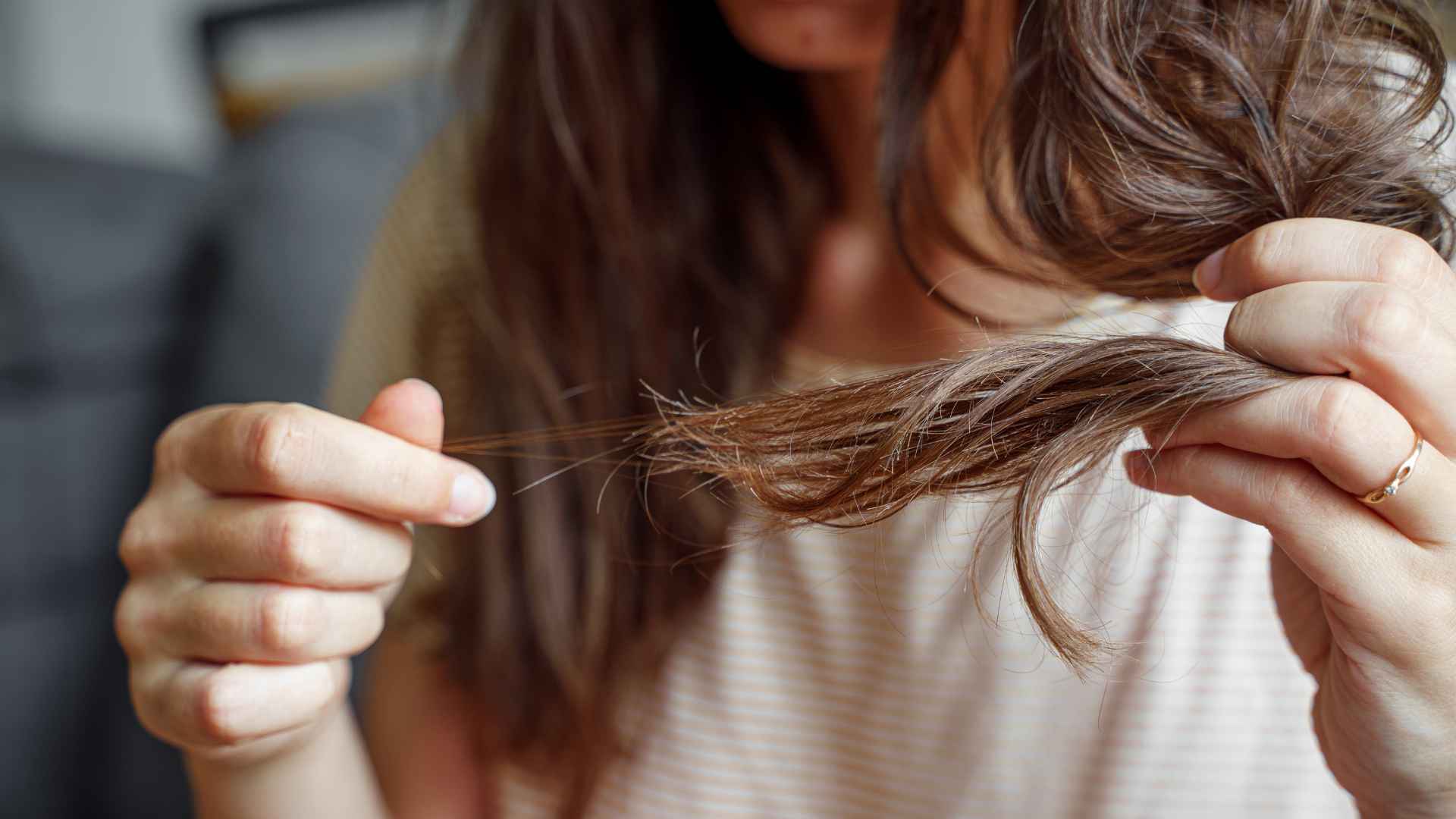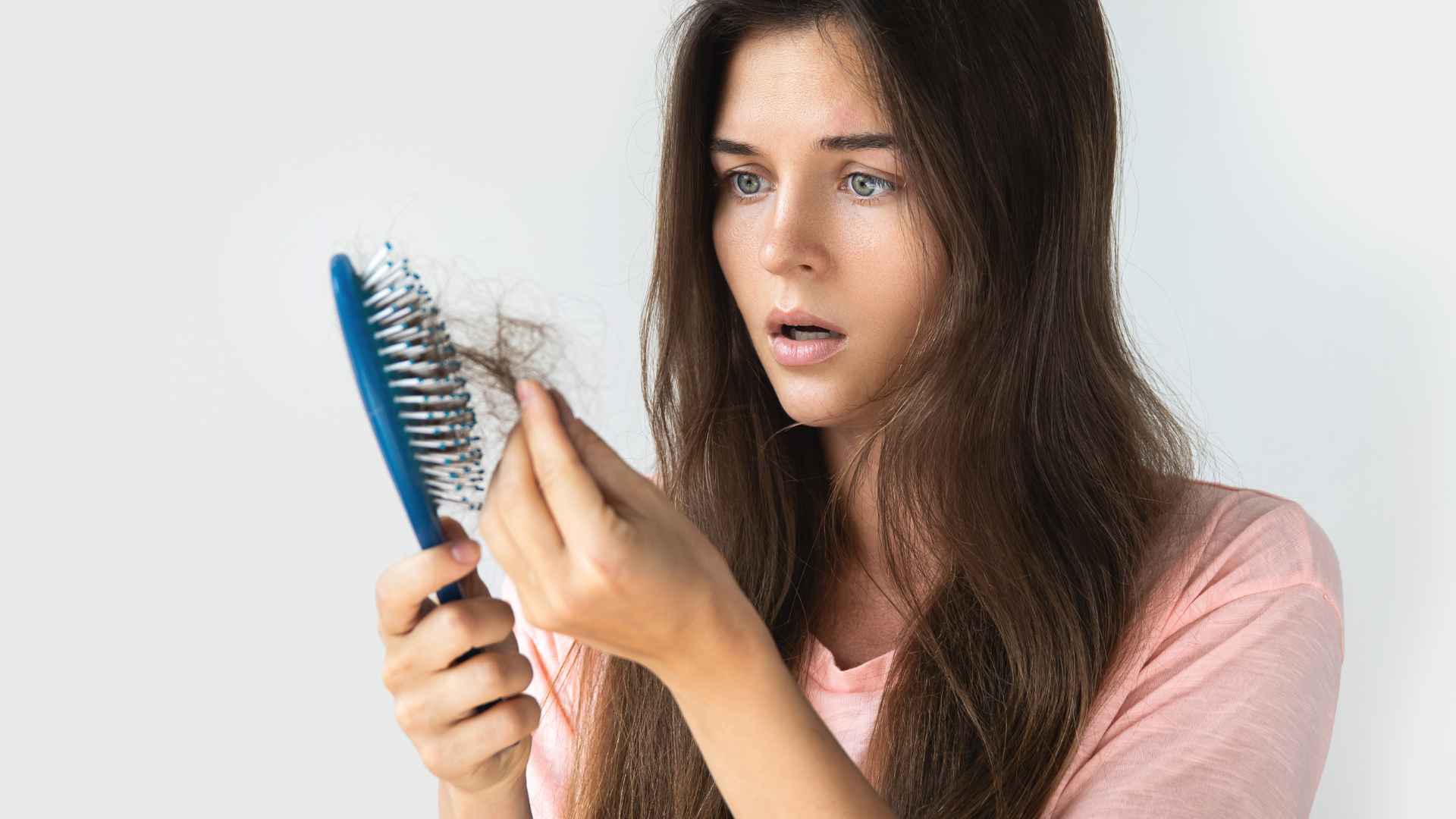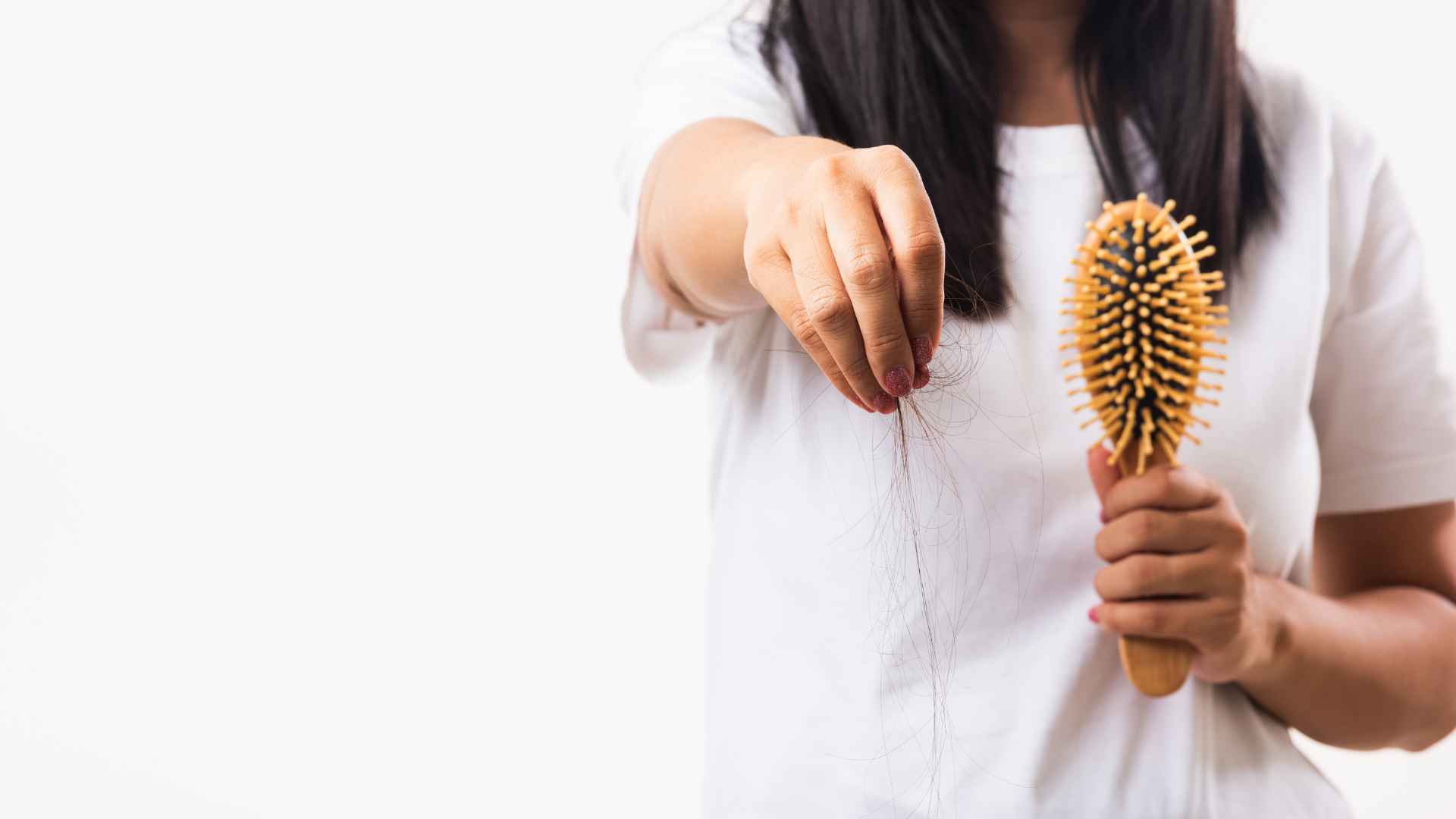Are you a new mother who has recently noticed increased hair shedding after giving birth? If so, you’re not alone. Hair loss is a common concern among women postpartum, and it can be both unsettling and puzzling. In this article, we aim to address this topic and provide clarity and reassurance.
Hair loss is a topic that often raises questions and curiosity, especially when it occurs during a significant life event like childbirth. We understand that the experience of postpartum hair loss can be distressing and may leave you wondering about its duration, causes, and how to cope with it.
In the following sections, we will delve into the subject of postpartum hair loss. We will discuss when it typically starts, how long it lasts, and factors that can influence its duration and severity. We will also provide practical tips for managing and coping with postpartum hair loss, as well as address common FAQs to offer further insights and support.
Our goal is to empower you with knowledge and reassure you that postpartum hair loss is a temporary phase that many women experience. By understanding the process and adopting strategies to support hair health, you can navigate this period with confidence and focus on the joyous journey of motherhood.
So, let’s embark on this exploration together, shedding light on the topic of postpartum hair loss and providing the clarity and reassurance you seek.
Understanding Hair Growth and Shedding

To understand postpartum hair loss, it’s essential to grasp the normal hair growth cycle and the phases it goes through. The hair growth cycle consists of three main phases: anagen, catagen, and telogen.
- Anagen Phase (Growth Phase): This is the active phase of hair growth. During anagen, the hair follicles produce new cells, and the hair shaft extends. The length of this phase can vary from person to person and can last anywhere from two to seven years. On average, about 85-90% of the hairs on your scalp are in the anagen phase at any given time.
- Catagen Phase (Transition Phase): After the anagen phase, the hair follicles enter a short transitional phase called catagen. This phase lasts for about two to three weeks. During catagen, the hair follicles shrink and detach from the blood supply. The hair growth stops, and the outer root sheath attaches to the hair shaft, preparing for the next phase.
- Telogen Phase (Resting and Shedding Phase): The telogen phase is the resting phase of the hair growth cycle, lasting around two to three months. During this phase, the hair follicles remain dormant, and the old hair is ready to shed. Approximately 10-15% of the hairs on your scalp are in the telogen phase at any given time.
Hair shedding is a natural part of the hair growth cycle and an essential process for healthy hair. The shedding occurs when the hair follicles push out the old hair shafts to make room for new hair growth during the next anagen phase. On an average day, it’s normal to shed about 50-100 hairs. This shedding is usually not noticeable since new hair growth replaces the shed hair.
It’s important to note that not all hairs on your scalp are in the same phase at the same time. The hair growth cycle is dynamic, with hairs entering and exiting different phases independently. Therefore, it’s normal to observe some level of hair shedding throughout your life as part of the natural hair growth cycle.
Postpartum hair loss occurs due to hormonal changes after childbirth, which can disrupt the hair growth cycle. During pregnancy, higher estrogen levels prolong the anagen (growth) phase, resulting in reduced shedding and thicker hair. However, after giving birth, hormone levels return to normal, and the hair follicles shift into the telogen (resting and shedding) phase. This transition causes the excessive shedding that is often observed as postpartum hair loss.
Remember, hair shedding is a natural and necessary process for healthy hair growth. Understanding the hair growth cycle can provide insight into why postpartum hair loss occurs and help alleviate concerns about the temporary shedding phase.
Different Types and Causes of Hair Loss
Hair loss can occur in various forms, and understanding the different types and their causes can shed light on the specific factors contributing to hair loss. Here are some common types of hair loss and their associated causes:
- Androgenetic Alopecia (Genetic Hair Loss): This is the most common form of hair loss and is often referred to as male or female pattern baldness. It has a strong genetic component and can be inherited from either the mother or father’s side of the family. Androgenetic alopecia is characterized by a gradual thinning of the hair over time, primarily in a predictable pattern, such as a receding hairline in men or widening parting in women.
- Telogen Effluvium (Temporary Hair Shedding): Telogen effluvium is a temporary hair loss condition characterized by excessive shedding of hair. It is usually triggered by significant physiological or emotional stressors, such as childbirth, major surgery, severe illness, or emotional trauma. The stressor disrupts the hair growth cycle, pushing more hairs into the telogen (resting and shedding) phase. Telogen effluvium typically resolves on its own once the underlying stressor is addressed.
- Alopecia Areata (Autoimmune Hair Loss): Alopecia areata is an autoimmune condition where the immune system mistakenly attacks the hair follicles, leading to hair loss. It often manifests as round patches of hair loss on the scalp but can also affect other areas of the body. The exact cause of alopecia areata is unknown, but it is believed to involve a combination of genetic, environmental, and immunological factors.
Common causes of hair loss, regardless of the specific type, include:
- Genetics: Family history and genetic predisposition can play a significant role in hair loss, particularly in androgenetic alopecia.
- Hormonal Changes: Hormonal fluctuations, such as those experienced during pregnancy, childbirth, menopause, or certain medical conditions, can contribute to hair loss.
- Medical Conditions: Certain medical conditions, such as thyroid disorders, scalp infections, autoimmune diseases, and hormonal imbalances, can cause hair loss.
- Stress: Physical or emotional stress can disrupt the hair growth cycle, leading to temporary hair shedding.
- Medications: Some medications, including certain chemotherapy drugs, blood thinners, and medications used for treating acne or autoimmune conditions, can cause hair loss as a side effect.
It’s important to note that these are general causes, and specific factors may vary depending on the individual and their unique circumstances. If you are experiencing significant hair loss or have concerns, consulting with a healthcare professional or dermatologist can help identify the underlying cause and provide appropriate guidance and treatment options.
What is Normal Hair Shedding?

Hair shedding is a natural part of the hair growth cycle and is considered a normal process. On average, it is typical to lose around 50-100 hairs per day as part of the natural hair shedding process. However, it’s important to note that individual shedding patterns can vary.
Several factors can influence the amount of hair shedding experienced by an individual:
- Age: As we age, the hair growth cycle may become shorter, resulting in a slightly increased rate of hair shedding. This is why it is common for older individuals to notice more hair shedding compared to their younger counterparts.
- Hair Care Practices: Certain hair care practices can impact hair shedding. For example, vigorous brushing or combing, especially when the hair is wet, can lead to increased hair breakage and shedding. Similarly, using harsh hair products or styling tools that cause excessive tension or damage to the hair can contribute to increased shedding.
- Seasonal Changes: It is not uncommon for individuals to experience slightly more hair shedding during certain seasons, particularly in the autumn months. This phenomenon, often referred to as seasonal hair shedding or “fall shedding,” is believed to be influenced by changes in light exposure and hormonal fluctuations.
While hair shedding is a natural process, it is important to be aware of any significant changes or excessive shedding that may indicate an underlying issue. If you notice sudden or severe hair shedding that goes beyond the normal range or if you have concerns about your hair health, it is advisable to consult with a healthcare professional or dermatologist for a proper evaluation and guidance.
Understanding the normal range of hair shedding and recognizing the individual variations can help alleviate unnecessary worry about everyday hair loss. Remember that paying attention to your hair care practices, adopting a gentle hair care routine, and maintaining overall hair and scalp health can contribute to minimizing excessive shedding and promoting healthy hair growth.
When Hair Loss May Indicate a Problem?
While a certain amount of hair shedding is considered normal, it’s important to recognize that excessive or sudden hair loss can sometimes be a sign of an underlying issue. While most cases of postpartum hair loss are temporary and resolve on their own, there are instances when hair loss may require further attention. Here are some warning signs to watch out for:
- Noticeable Thinning: If you observe significant thinning of the hair, especially in specific areas of the scalp, it may be a cause for concern. Thinning hair that is not related to the normal pattern of hair loss, such as androgenetic alopecia, should be assessed by a healthcare professional.
- Bald Patches: The development of bald patches or areas of complete hair loss, known as alopecia, is a clear indication that there may be an underlying issue. This can occur in conditions like alopecia areata, where the immune system attacks the hair follicles.
- Hair Loss Accompanied by Scalp Irritation or Pain: If you experience scalp irritation, redness, itching, or pain in conjunction with hair loss, it is recommended to seek medical attention. These symptoms may be associated with scalp infections, dermatitis, or other scalp disorders that require proper diagnosis and treatment.
- Sudden and Severe Hair Loss: If you notice an abrupt onset of significant hair loss, it is advisable to consult a healthcare professional. Sudden and excessive hair loss can be triggered by various factors, including certain medical conditions, medications, hormonal imbalances, or nutritional deficiencies.
If you observe any of these warning signs or have concerns about your hair loss, it is essential to consult with a healthcare professional or dermatologist for a thorough evaluation. They can help determine the underlying cause of your hair loss and provide appropriate guidance and treatment options based on your specific situation.
Remember that being proactive about seeking medical advice when necessary is crucial in identifying and addressing any potential underlying issues related to hair loss.
Seeking Professional Help

If you have concerns about your hair loss, it is highly recommended to consult with healthcare professionals who specialize in hair and scalp health, such as dermatologists or trichologists. These professionals can provide a thorough evaluation, accurate diagnosis, and appropriate treatment options based on your specific situation. Here’s why seeking professional help is important:
- Accurate Diagnosis: Hair loss can have various underlying causes, and determining the specific cause requires expertise and a comprehensive evaluation. Healthcare professionals specializing in hair and scalp conditions have the knowledge and tools to accurately diagnose the cause of your hair loss. They can identify whether it is related to postpartum hair loss, genetic factors, hormonal imbalances, medical conditions, or other contributing factors.
- Tailored Treatment Options: Once the cause of your hair loss is determined, healthcare professionals can recommend appropriate treatment options tailored to your specific needs. Treatment may involve addressing underlying medical conditions, adjusting medications, hormonal management, dietary changes, topical treatments, or other interventions. The expertise of these professionals ensures that you receive the most suitable and effective treatment plan.
- Guidance and Support: Consulting with healthcare professionals specializing in hair loss provides you with guidance and support throughout your hair loss journey. They can answer your questions, address your concerns, and offer advice on hair care practices, lifestyle modifications, and strategies for managing hair loss. This support can be valuable in helping you navigate through the emotional and practical aspects of dealing with hair loss.
Remember, healthcare professionals are there to help you understand and manage your hair loss. They have the expertise and resources to provide you with the best possible care. If you are experiencing significant hair loss or have concerns, do not hesitate to reach out to a dermatologist or trichologist for a thorough evaluation and personalized guidance.
By seeking professional help, you are taking an important step towards understanding the cause of your hair loss and exploring appropriate treatment options to address it effectively.
Lifestyle Factors and Hair Health

Maintaining a healthy lifestyle can play a crucial role in promoting optimal hair health. Here are some lifestyle factors to consider:
- Balanced Diet: A nutritious diet is essential for healthy hair. Include a variety of foods rich in vitamins, minerals, and proteins, such as fruits, vegetables, whole grains, lean meats, fish, nuts, and seeds. These nutrients provide the building blocks for hair growth and support overall hair health.
- Proper Hair Care Practices: Adopting gentle hair care practices can help prevent unnecessary damage and promote healthy hair growth. Use mild shampoos and conditioners suited to your hair type, and avoid excessive brushing, especially when the hair is wet. Be gentle when detangling your hair to minimize breakage, and use wide-toothed combs or brushes with soft bristles. Additionally, avoid hairstyles that pull on the hair too tightly, as they can lead to hair breakage and traction alopecia.
- Stress Management: Excessive stress can have negative effects on hair health. Engaging in stress management techniques, such as regular exercise, meditation, deep breathing exercises, or engaging in hobbies, can help reduce stress levels. Managing stress can support overall well-being, including the health of your hair.
- Heat and Chemical Treatments: Excessive heat styling tools, such as curling irons, straighteners, and blow dryers, can cause damage to the hair shaft, leading to breakage and hair loss. Minimize the use of such tools and opt for heat-protectant products when styling. Similarly, harsh chemical treatments, like perming, relaxing, or excessive hair coloring, can weaken the hair and contribute to hair damage. Use these treatments sparingly and seek professional advice to minimize potential damage.
- Scalp Health: A healthy scalp provides a conducive environment for hair growth. Keep your scalp clean and free from excessive oil and product buildup. Avoid using harsh or irritating hair products that may cause scalp inflammation or irritation. If you experience scalp issues, such as dandruff or itching, consult a healthcare professional for appropriate treatment.
By incorporating these lifestyle factors into your routine, you can support the overall health of your hair. Remember that maintaining healthy hair is a holistic approach that involves not only external care but also internal well-being.
While these practices promote hair health, it’s important to note that they may not directly prevent or reverse postpartum hair loss. Postpartum hair loss is primarily influenced by hormonal changes and will typically resolve on its own. However, adopting a healthy lifestyle can contribute to overall hair health and support the regrowth process.
Watch What is the normal hair shedding | Video
Top 5 FAQs and answers related to is hair loss normal
Is hair loss normal?
Yes, hair loss is a normal part of the hair growth cycle. It is common to lose around 50-100 hairs per day as part of the natural shedding process. This shedding is balanced by new hair growth, and unless there are excessive or sudden changes, it is typically not a cause for concern.
How can I distinguish between normal hair shedding and excessive hair loss?
Normal hair shedding involves losing a certain amount of hair consistently over time, usually without noticeable thinning or bald patches. Excessive hair loss is characterized by a significant increase in hair shedding, noticeable thinning, or the development of bald patches. If you have concerns, consulting with a healthcare professional or dermatologist can provide a proper evaluation and guidance.
Can hair loss occur in both men and women?
Yes, hair loss can occur in both men and women. While male pattern baldness is more commonly associated with men, women can also experience various forms of hair loss, such as female pattern hair loss, postpartum hair loss, and other conditions that affect hair health.
Can stress cause hair loss?
Yes, excessive or prolonged stress can contribute to hair loss. Stress can disrupt the hair growth cycle, leading to a condition called telogen effluvium, which causes temporary hair shedding. Managing stress through stress reduction techniques and self-care practices can help minimize its impact on hair health.
Are there any treatments to prevent or reverse hair loss?
The treatment options for hair loss depend on the underlying cause. Some forms of hair loss, such as androgenetic alopecia, may have treatments available to slow down the progression or promote hair regrowth. However, it is important to consult with a healthcare professional or dermatologist to determine the most suitable treatment options based on your specific situation.
Conclusion

In conclusion, it is important to understand that hair loss is a normal part of the hair growth cycle. Let’s recap the key points discussed in this article:
- Hair loss is a natural process and losing around 50-100 hairs per day is considered normal.
- Excessive or sudden hair loss, noticeable thinning, or bald patches may indicate an underlying issue and should be evaluated by healthcare professionals.
- Hair loss can occur in both men and women and can be influenced by factors such as genetics, hormonal changes, stress, and medical conditions.
- Seeking professional advice from healthcare professionals, such as dermatologists or trichologists, can provide accurate diagnosis, appropriate guidance, and tailored treatment options.
- Maintaining a healthy lifestyle, including a balanced diet, proper hair care practices, stress management, and minimizing heat and chemical treatments, can contribute to optimal hair health.
- Taking a proactive approach to maintaining hair health and overall well-being is essential.
If you have concerns about your hair loss or notice any significant changes, don’t hesitate to consult with healthcare professionals. They have the expertise to address your concerns, provide accurate diagnosis, and offer appropriate solutions based on your unique situation.
Remember, maintaining hair health is a holistic process that involves both internal and external care. By adopting healthy lifestyle practices and seeking professional advice when needed, you can support optimal hair health and overall well-being.
Take care of your hair, prioritize self-care, and embrace your unique journey towards maintaining healthy and beautiful hair.
Please share this Is Hair Loss Normal? Guide with Causes for Hair Loss with your friends and do a comment below about your feedback.
We will meet you on next article.
Until you can read, How Much Hair Loss Is Normal? Brushing, Washing, and More